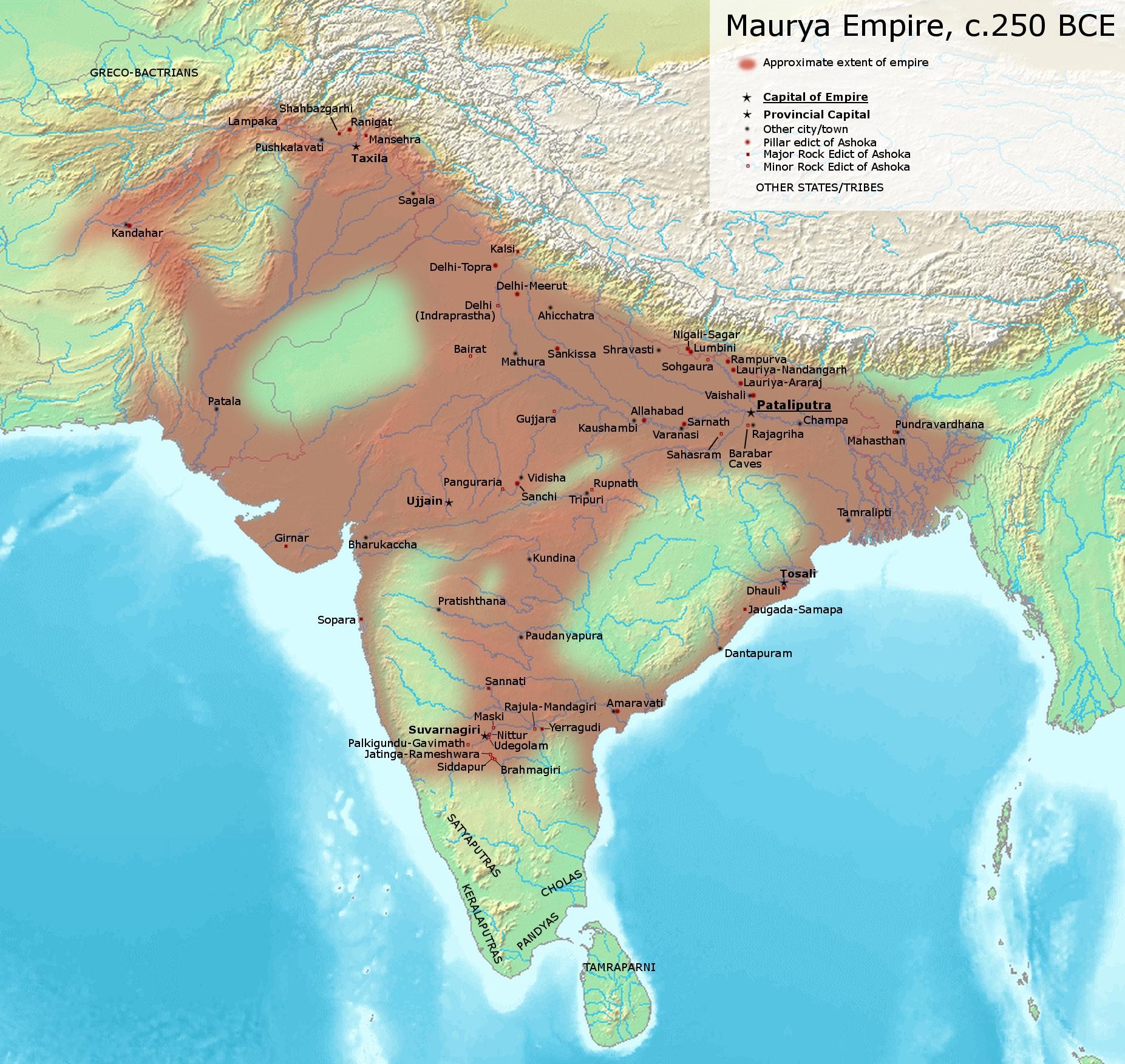The Edicts of Ashoka
The Edicts of Ashoka are a collection of more than thirty inscriptions on pillars, boulders, and cave walls, made by Emperor Ashoka of the Mauryan Empire during his reign, from 268 BCE to 232 BCE. Ashoka's "Inscriptions of the Dharma" were dispersed throughout the areas of modern-day India, Bangladesh, Nepal, Afghanistan and Pakistan. They provided the first tangible evidence of Buddhism, along with the locations of important early buddhist archaeological sites. The edicts describe Ashoka's views about dhamma, an earnest attempt to solve some of the problems faced by a complex society.
The inscriptions proclaim Ashoka's adherence to Buddhist philosophy which, as in Hinduism, is called dharma, "Law". They describe his efforts to develop the Buddhist dharma throughout his kingdom, which spanned most of present day India and parts of Pakistan, Afghanistan, and Bangladesh. Although Buddhism and Gautama Buddha are mentioned, the edicts focus on social and moral rules rather than specific religious practices or the philosophical dimension of Buddhism.

